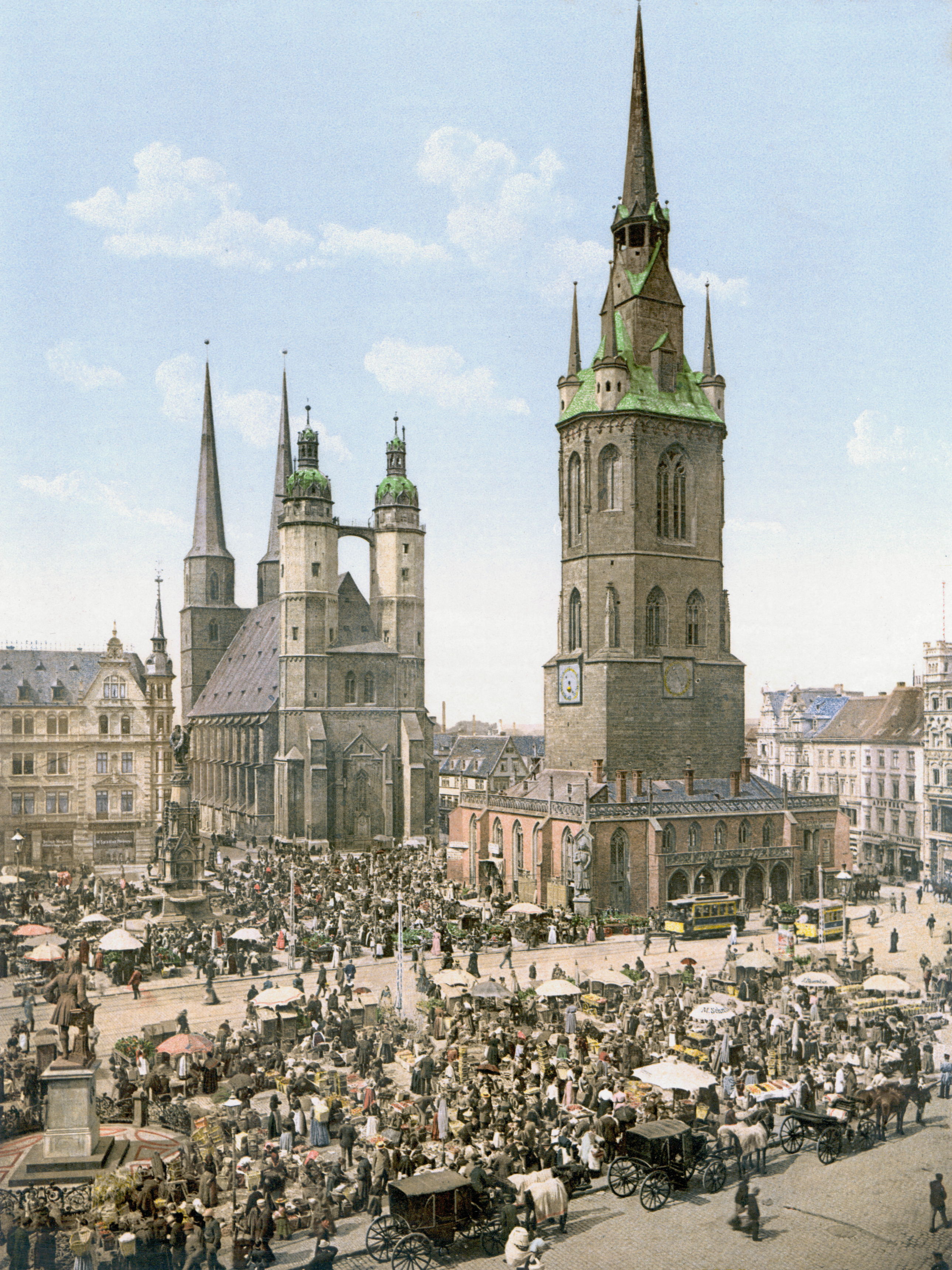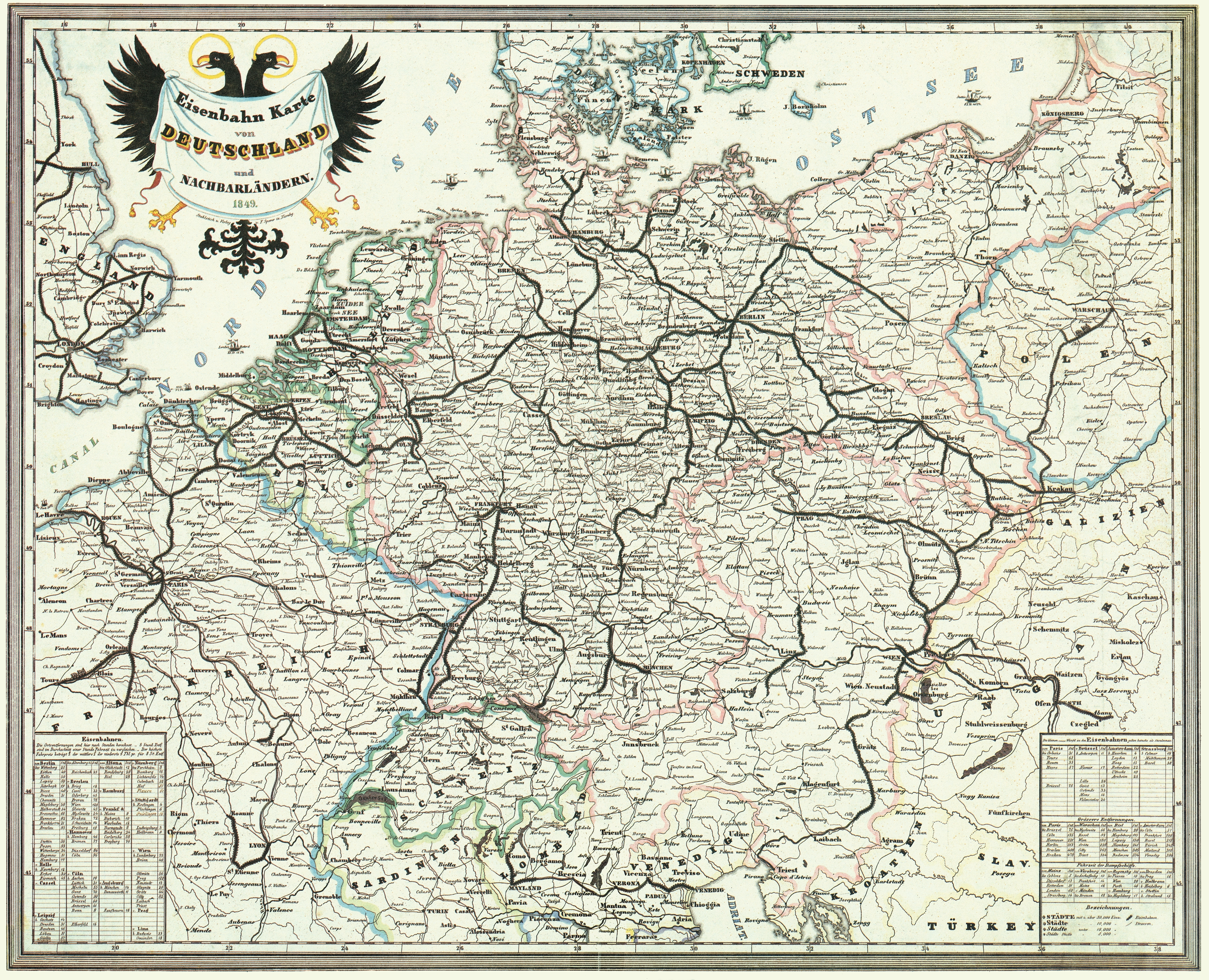|
Köthen–Aschersleben Railway
The Köthen–Aschersleben railway is one of the oldest railway lines in Germany, with its eastern half opened in 1846. It forms an east-west link in the state of Saxony-Anhalt and connects several major towns. History The first serious plans for the construction of the line were developed by the Duchy of Anhalt in 1845. At the time, Köthen already had rail connections in three directions, with the Magdeburg-Leipzig line connecting to Magdeburg in the north and Halle in the south and the main line of the Berlin-Anhalt Railway Company () connecting to Dessau and Berlin in the east. In 1845, the ''Anhalt-Köthen-Bernburg Railway Company'' (''Anhalt-Köthen-Bernburger Eisenbahn'') was founded and shortly thereafter got approval for the construction of the Köthen–Bernburg line. The following year the line was opened, terminating at Köthen’s third station. Biendorf was the only station in between. In 1863, the ''Anhalt-Köthen-Bernburg Railway'' was taken by the Magdeburg-H ... [...More Info...] [...Related Items...] OR: [Wikipedia] [Google] [Baidu] |
Saxony-Anhalt
Saxony-Anhalt ( ; ) is a States of Germany, state of Germany, bordering the states of Brandenburg, Saxony, Thuringia and Lower Saxony. It covers an area of and has a population of 2.17 million inhabitants, making it the List of German states by area, 8th-largest state in Germany by area and the List of German states by population, 11th-largest by population. Its capital and most populous city is Magdeburg. The state of Saxony-Anhalt was formed in July 1945 after World War II, when the Soviet Military Administration in Germany, Soviet army administration in Allied-occupied Germany formed it from the former Free State of Prussia, Prussian Province of Saxony and the Free State of Anhalt. Saxony-Anhalt became part of the East Germany, German Democratic Republic in 1949, but was dissolved in 1952 during Administrative divisions of East Germany, administrative reforms and its territory was divided into the districts of Halle (Bezirk), Halle and Magdeburg (Bezirk), Magdeburg. Follow ... [...More Info...] [...Related Items...] OR: [Wikipedia] [Google] [Baidu] |
Giersleben
Giersleben is a municipality in the district of Salzlandkreis, in Saxony-Anhalt, Germany Germany, officially the Federal Republic of Germany, is a country in Central Europe. It lies between the Baltic Sea and the North Sea to the north and the Alps to the south. Its sixteen States of Germany, constituent states have a total popu .... References Salzlandkreis {{Salzlandkreis-geo-stub ... [...More Info...] [...Related Items...] OR: [Wikipedia] [Google] [Baidu] |
Bernburg
Bernburg (Saale) () is a town in Saxony-Anhalt, Germany, capital of the Salzlandkreis district. The former residence of the Anhalt-Bernburg princes is known for its Renaissance castle. Geography The town centre is situated in the fertile Magdeburg Börde lowland on the Saale river, approx. downstream from Halle and up stream from Magdeburg. It is dominated by the huge Bernburg Castle featuring a museum as well as a popular, recently updated bear pit in its moat. The municipal area comprises the town Bernburg proper and eight ''Ortschaften'' or municipal divisions: Aderstedt (incorporated in 2003), Baalberge, Biendorf, Gröna, Peißen, Poley, Preußlitz, and Wohlsdorf, all incorporated on 1 January 2010.Hauptsatzung der Stadt Bernburg (Saale) ... [...More Info...] [...Related Items...] OR: [Wikipedia] [Google] [Baidu] |
Berlin
Berlin ( ; ) is the Capital of Germany, capital and largest city of Germany, by both area and List of cities in Germany by population, population. With 3.7 million inhabitants, it has the List of cities in the European Union by population within city limits, highest population within its city limits of any city in the European Union. The city is also one of the states of Germany, being the List of German states by area, third smallest state in the country by area. Berlin is surrounded by the state of Brandenburg, and Brandenburg's capital Potsdam is nearby. The urban area of Berlin has a population of over 4.6 million and is therefore the most populous urban area in Germany. The Berlin/Brandenburg Metropolitan Region, Berlin-Brandenburg capital region has around 6.2 million inhabitants and is Germany's second-largest metropolitan region after the Rhine-Ruhr region, as well as the List of EU metropolitan areas by GDP, fifth-biggest metropolitan region by GDP in the European Union. ... [...More Info...] [...Related Items...] OR: [Wikipedia] [Google] [Baidu] |
Dessau
Dessau is a district of the independent city of Dessau-Roßlau in Saxony-Anhalt at the confluence of the rivers Mulde and Elbe, in the ''States of Germany, Bundesland'' (Federal State) of Saxony-Anhalt. Until 1 July 2007, it was an independent city. The population of Dessau is 67,747 (Dec. 2020). Geography Dessau is situated on a floodplain where the Mulde flows into the Elbe. This causes yearly floods. The worst flood took place in the year 2002, when the Waldersee district was nearly completely flooded. The south of Dessau touches a well-wooded area called Mosigkauer Heide. The highest elevation is a 110 m high former rubbish dump called Scherbelberg in the southwest of Dessau. Dessau is surrounded by numerous parks and palaces that make it one of the greenest towns in Germany. History Dessau was first mentioned in 1213. It became an important centre in 1570, when the Principality of Anhalt was founded. Dessau became the capital of this state within the Holy Roman Empire. ... [...More Info...] [...Related Items...] OR: [Wikipedia] [Google] [Baidu] |
Berlin-Anhalt Railway Company
The Berlin-Anhalt Railway Company (German: ''Berlin-Anhaltische Eisenbahn-Gesellschaft'', BAE) was a railway company in Prussia. The railway connection between Berlin and Köthen, built by the BAE, was one of the first long-distance railways in Germany. History The Berlin-Anhalt Railway Company was one of the most important railway companies in Germany for about four decades in the 19th century. In addition to the main Anhalt Railway, the BAE built a network of important railway connections between Berlin and the northern parts of the Kingdom of Saxony, the Prussian Province of Saxony, and the duchy of Anhalt, with a total length of 430 kilometers at its apex. An initial plan to build a railway between Berlin and Riesa, which would have connected to the Leipzig–Dresden railway, failed due to the railway politics of the state of Prussia. Therefore, in 1836 the company decided to pursue an alternative route in the direction of the duchy of Anhalt, and in 1839 changed its ... [...More Info...] [...Related Items...] OR: [Wikipedia] [Google] [Baidu] |
Halle, Saxony-Anhalt
Halle (Saale), or simply Halle (), is the second largest city of the German state of Saxony-Anhalt. It is the sixth-most populous city in the area of former East Germany after (East) Berlin, Leipzig, Dresden, Chemnitz and Magdeburg as well as the 31st-largest city of Germany. With around 226,000 inhabitants, it is less populous than the state capital, Magdeburg. With Leipzig, the largest city of Saxony, Halle forms the polycentric Leipzig-Halle conurbation. Leipzig/Halle International Airport lies between the two cities, in Schkeuditz. The Leipzig-Halle conurbation is at the heart of the larger Central German Metropolitan Region. Halle has been known by many names throughout its history. From the 15th to the 17th century: ''Hall in Sachsen''. From then until the beginning of the 20th century, the name Halle an der Saale was used, and still remains a more formal reference for the city. Additionally, from 1965 to 1995 the city was referred to as ''Halle/Saale''. Halle lies i ... [...More Info...] [...Related Items...] OR: [Wikipedia] [Google] [Baidu] |
Magdeburg
Magdeburg (; ) is the Capital city, capital of the Germany, German States of Germany, state Saxony-Anhalt. The city is on the Elbe river. Otto I, Holy Roman Emperor, Otto I, the first Holy Roman Emperor and founder of the Archbishopric of Magdeburg, was buried in the city's Magdeburg Cathedral, cathedral after his death. Magdeburg's version of German town law, known as Magdeburg rights, spread throughout Central Europe, Central and Eastern Europe. In the Late Middle Ages, Magdeburg was one of the largest and most prosperous German cities and a notable member of the Hanseatic League. One of the most notable people from the city was Otto von Guericke, famous for his experiments with the Magdeburg hemispheres. Magdeburg has experienced three major devastations in its history. In 1207 the first catastrophe struck the city, with a fire burning down large parts of the city, including the Magdeburg Cathedral#Previous building, Ottonian cathedral. The Catholic League (German), Catholi ... [...More Info...] [...Related Items...] OR: [Wikipedia] [Google] [Baidu] |
Köthen
Köthen () is a town in Germany. It is the capital of the district of Anhalt-Bitterfeld in Saxony-Anhalt, about north of Halle. Köthen is the location of the main campus and the administrative centre of the regional university, Anhalt University of Applied Sciences/Hochschule Anhalt which is especially strong in information technology. The city is conveniently located at the hub of the Magdeburg–Leipzig, Dessau–Köthen and Köthen–Aschersleben railways. Köthen is situated in a fertile area with rich black soil suitable to the cultivation of sugar-beets. Industry includes high-tech engineering, manufacture of cranes, as well as chemicals, printing, and foodstuffs. In English, the name of the city is often spelt anachronistically as Cöthen, a practice that has become standard in the literature relating to the life and work of Johann Sebastian Bach, who resided and worked there from 1717 to 1723. History Owing to the fertile soil of the region, the area of Köthen i ... [...More Info...] [...Related Items...] OR: [Wikipedia] [Google] [Baidu] |
Anhalt
Saxony-Anhalt ( ; ) is a state of Germany, bordering the states of Brandenburg, Saxony, Thuringia and Lower Saxony. It covers an area of and has a population of 2.17 million inhabitants, making it the 8th-largest state in Germany by area and the 11th-largest by population. Its capital and most populous city is Magdeburg. The state of Saxony-Anhalt was formed in July 1945 after World War II, when the Soviet army administration in Allied-occupied Germany formed it from the former Prussian Province of Saxony and the Free State of Anhalt. Saxony-Anhalt became part of the German Democratic Republic in 1949, but was dissolved in 1952 during administrative reforms and its territory was divided into the districts of Halle and Magdeburg. Following German reunification, the state of Saxony-Anhalt was re-established in 1990 and became one of the new states of the Federal Republic of Germany. Saxony-Anhalt is renowned for its rich cultural heritage and possesses the highest con ... [...More Info...] [...Related Items...] OR: [Wikipedia] [Google] [Baidu] |
List Of The First German Railways To 1870
List of the first German railways to 1870 with German railways ordered by date of the commissioning the first phase of construction. For context see History of rail transport in Germany. Maps References * * {{DEFAULTSORT:Germany railways History of rail transport in Germany Lists of firsts ... [...More Info...] [...Related Items...] OR: [Wikipedia] [Google] [Baidu] |







